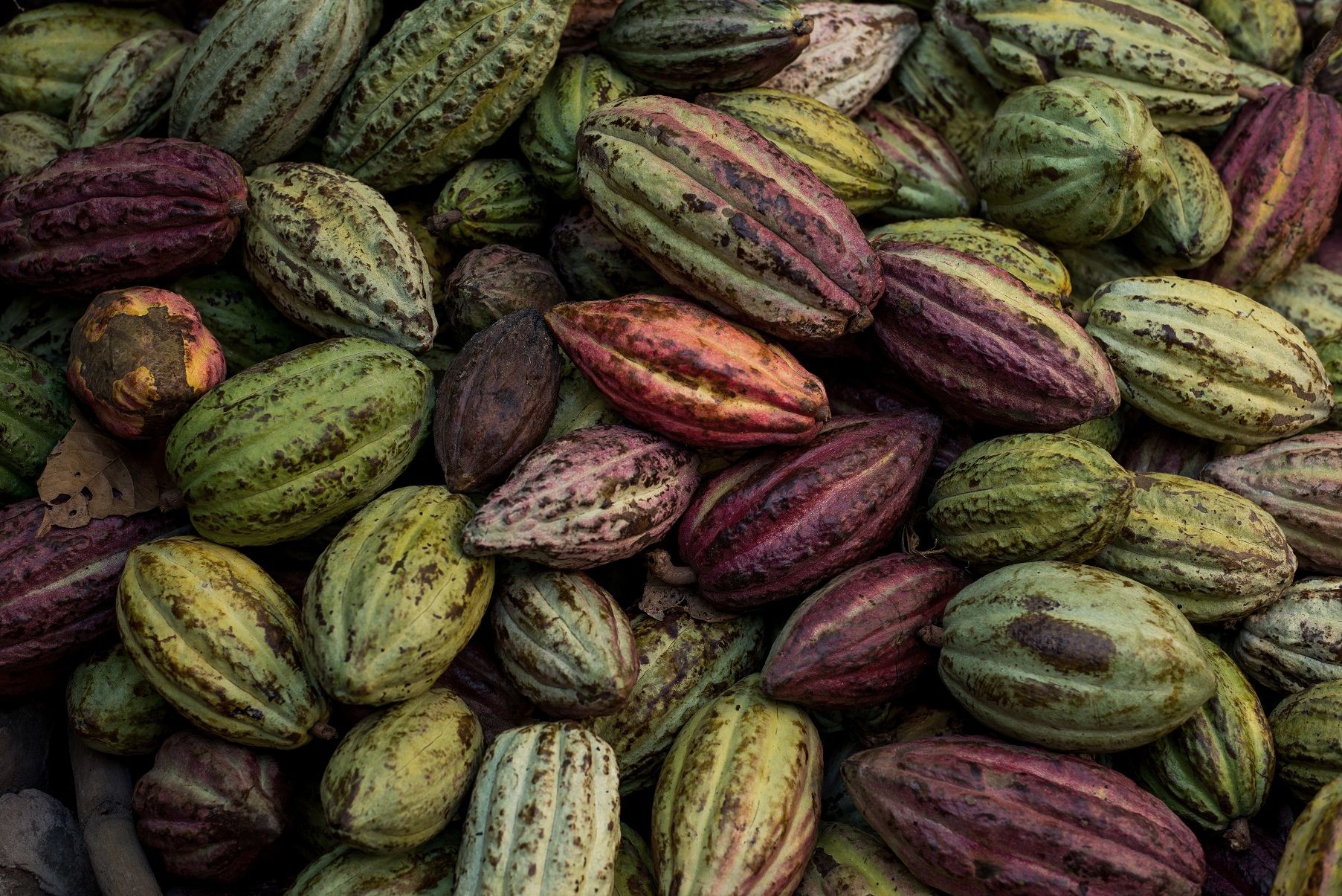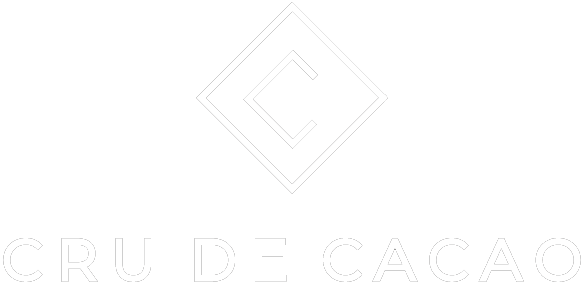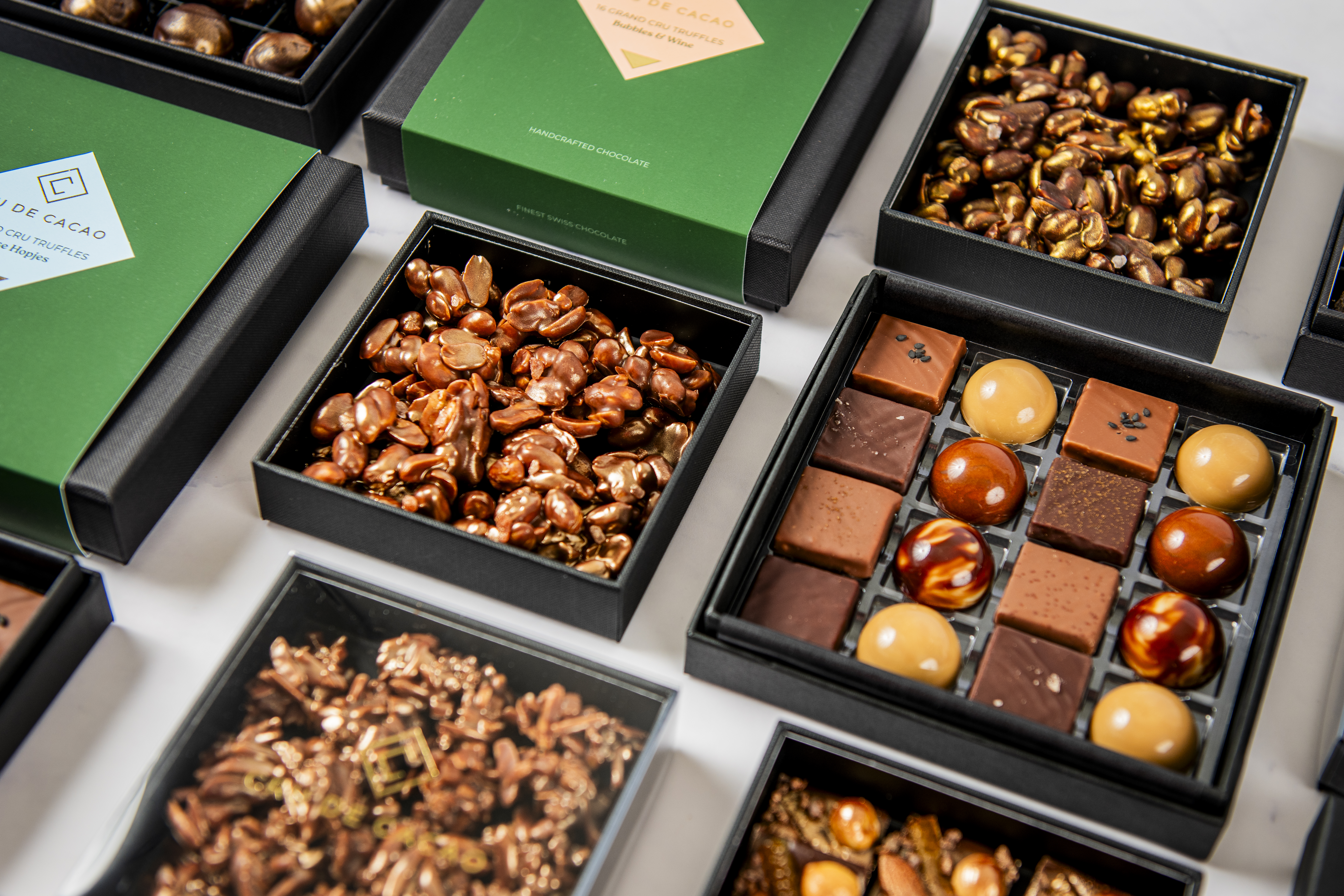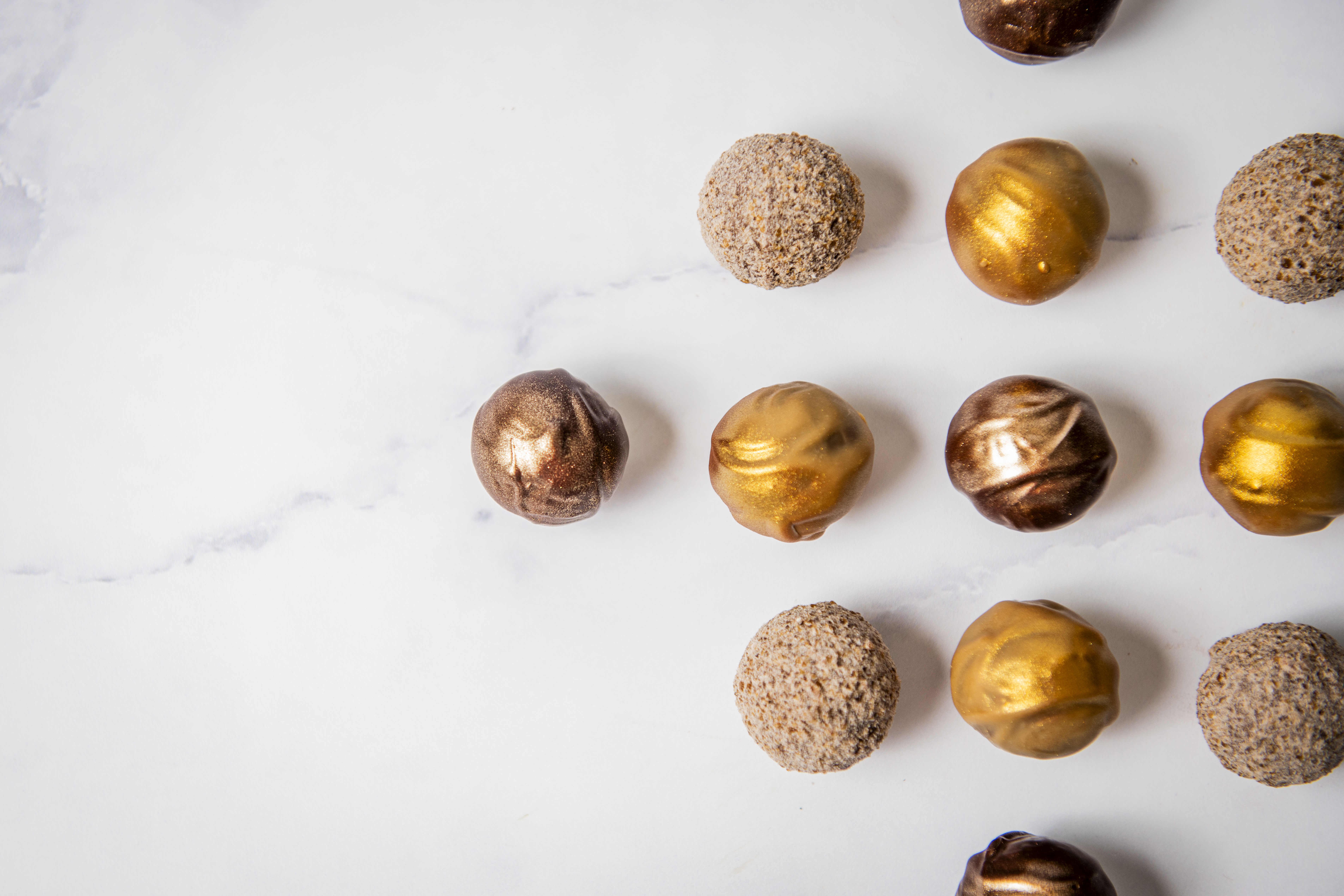01/10/2022

How is chocolate made?
Chocolate making starts with the cacao tree
Chocolate making starts a long way from here. Namely, at the cacao tree. Cocoa trees grow in the tropical belt between 15 degrees north and 15 degrees south of the equator. They thrive best in a constant climate with temperatures averaging 25°C and in areas with lots of rain and high humidity. The tropical rainforest! Despite their preference for heat, cocoa trees avoid direct sunlight and need a "canopy. Therefore, they are often grown under trees such as banana, rubber and mango.
From Blossom to Chocolate
As with all trees and plants, the creation of the cacao fruit begins with blossom. The special thing about a cacao tree is that the blossom grows directly from the trunk. Another interesting fact is that humans help artificially fertilize the blossom using a brush. This is because only 5% of the blossom is naturally pollinated by insects. After about 5 months, the cacao fruit is ripe. Also called cacao "pod. The cocoa farmer carefully removes the brightly colored fruit from the tree with a sharp knife so that unripe fruit and blossoms are not damaged. This is because the cocoa tree can contain blossoms and fruit at the same time. After harvesting, the pods are opened with a machete so that the fermentation process can begin. The seeds and pulp are removed from the cacao pods and placed in large wooden boxes. They are then covered with banana leaves. Due to the high sugar content of the pulp, a fermentation process begins, raising the temperature to as high as 50°C. During this process, the color of the pulp changes from cream to the familiar chocolate brown color and the basis for the cocoa aroma is laid.
Drying in the tropical sun
After the fermentation process is complete (this takes about 5 days), the farmer places the cocoa beans in the tropical sun to dry them. A wooden rake is used to mix the beans regularly so that they dry evenly. When the cocoa beans have almost no moisture left, they are sorted by size and quality. This is done in preparation for the roasting process, as only beans of similar size will achieve even roasting.
Cocoa beans by boat to Switzerland
The cocoa farmer's work is done. The carefully and lovingly grown and selected cocoa beans are now handed over to the producer, who will turn them into chocolate. As we know chocolate. Just before leaving, the sorted cocoa beans are filled into jute bags or special air-permeable cloth bags, weighed (60 or 70 kg bags) and then sewn shut. Ready for transport to chocolate manufacturer Felchlin. The cocoa beans are transported to Europe by Felchlin's own ships. They reach Basel (Switzerland) via the port of Rotterdam. Upon arrival at Felchlin in Schwyz, the burlap bags are cut open and the quality of the cocoa beans is assessed. The cocoa beans then undergo a cleaning process, in which foreign objects such as stones, pieces of wood and metal are removed. Bacteria and germs are then killed by heating the cocoa beans with steam to a temperature of 127°C. Pretty fresh!
Roasting of cocoa beans
Cleaning is followed by a meticulous roasting process. The cocoa beans are carefully roasted in small portions in the traditional way. The temperature and time depend on the characteristics of the cocoa bean and the desired roasting taste of the chocolate. Each chocolate has its own recipe for this. Then the cooled cocoa beans are put into a kind of cracking machine. Like a big nutcracker. This machine "cracks" the cocoa bean, so that the husk comes loose from the inner part. A vibrating belt and airflow separates the shells from the inner cocoa beans. Then the cocoa beans are finely ground into cocoa 'nibs'.
Grinding the cocoa beans.
The finely chopped cocoa nibs are put into a kneading machine with liquid cocoa butter, cane sugar and possibly a touch of vanilla from Madagascar and kneaded into, for example, dark chocolate. For making milk or white chocolate, milk powder is added to this. The kneaded mass then passes between grinding stones similar to those in our old Dutch mills, so that the cocoa mass becomes very fine. Now there is chocolate, but for really tasty chocolate, one last step in making chocolate is very important.
The final step in making chocolate
In the final step, conching, lies the true secret of soft melting chocolate. The chocolate mass is heated and mixed for up to sometimes as long as 72 hours, so that the desired aromas, such as floral notes, fruit, spices, cocoa or coffee come out well. Conching, by the way, was a discovery made by Rodolphe Lindt in 1897. Mr. Lindt found out to his horror after the weekend that he had accidentally left the conching machine on. As is often the case with inventions, this is how he accidentally found out that this process produced fantastic flavors. After conching, the chocolate is tempered so that it solidifies nicely. The small rounds of chocolate are packed in 2 kg bags and sent to us by truck.
There is chocolate to make
Contrary to the saying "there's no chocolate to be made," we hope this blog will help you understand how chocolate is made. If it has made you curious about our assortment, feel free to take a look at our online store.


